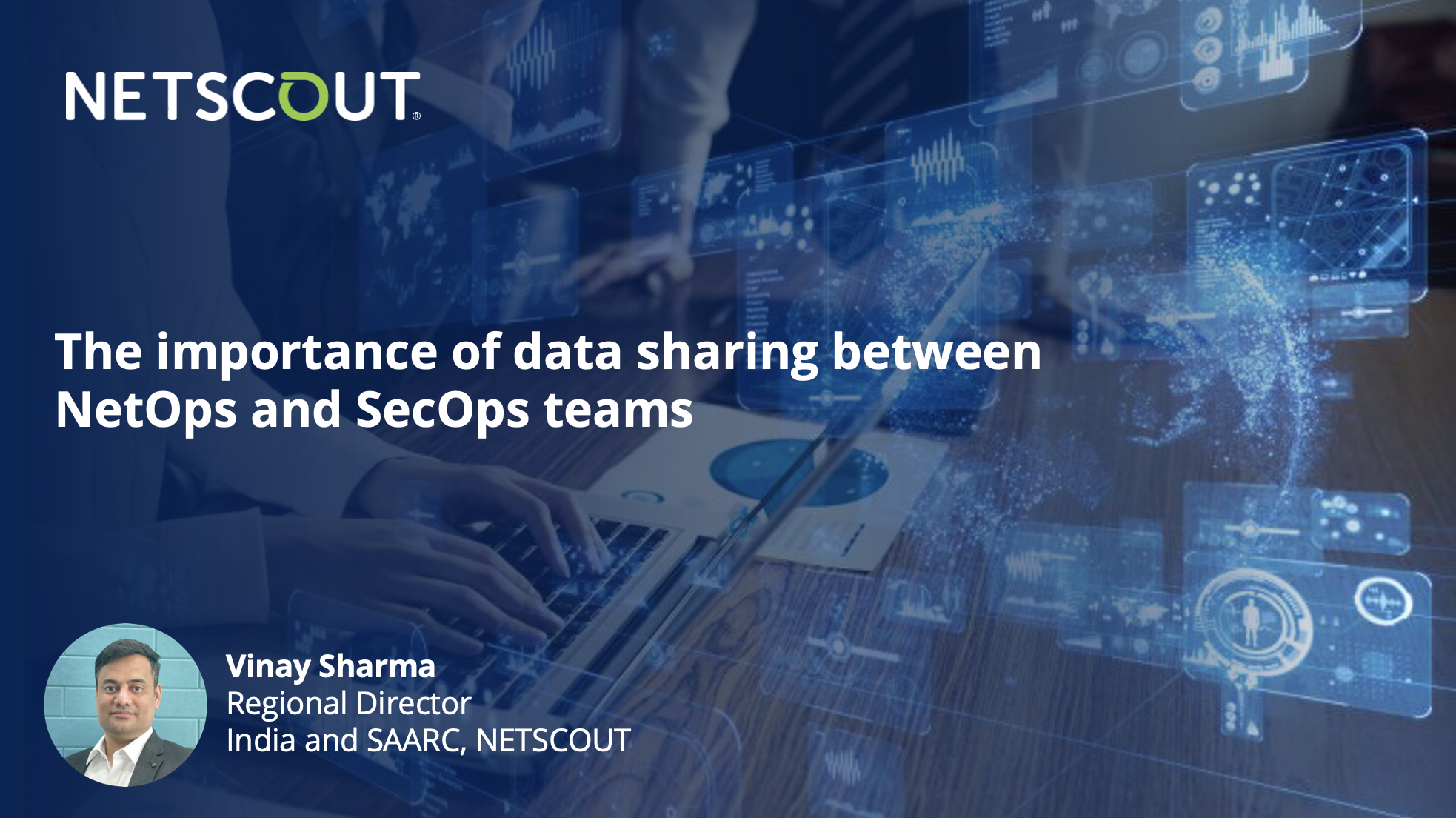The importance of data sharing between NetOps and SecOps teams - Vinay Sharma, Regional Director, India and SAARC, NETSCOUT

Traditionally Network Operations and Security Operations teams have operated in their own silos mainly due to different goals. Network teams focus on facilitating access to information and devices, while security teams focus on limiting access to information and devices. This results in disparate tools and leads to blind spots within the network which bad actors can exploit. Furthermore, if/when a threat is detected, it can take days/weeks/months to investigate and remediate the issue due to a lack of communication and collaboration between the two teams.
Although these two teams traditionally have distinct responsibilities, it is crucial for the collaboration of NetOps and SecOps teams and the sharing of data between them. In fact, many security breaches are discovered when operations or applications become slow and then a closer look reveals there has been a security breach.
Here, we will explore the advantages of sharing data between NetOps and
SecOps teams and how the practice helps enterprises avoid common challenges
that can arise from siloed data.
- Faster threat detection and response: When the NetOps and SecOps teams pool their
network traffic data and threat intelligence, they can promptly identify
potential security breaches and initiate swift investigations. This collaborative effort enables a proactive
approach to mitigating threats, reducing the risk of substantial damage or data
loss.
- Improved network performance: Enhanced network performance stands out as
an important objective for NetOps teams.
The sharing of security data is invaluable for these teams as they gain
insights into traffic patterns that could potentially lead to network
congestion or performance issues. This
information empowers them to take immediate action, optimizing network
performance and ensuring that critical applications receive the necessary
bandwidth for smooth operation.
- Enhanced visibility and monitoring: Sharing data will result in a holistic view
of network activities, empowering SecOps teams to provide NetOps with in-depth
insights into traffic patterns. This
collaborative monitoring approach allows both teams to identify anomalies,
unusual behavior, or suspicious activity promptly. Together, they can
proactively detect potential threats and performance bottlenecks, further
strengthening the organization's security posture.
- Compliance monitoring and reporting:
Adhering to industry regulations and internal policies is a foundational
necessity for organizations of all sizes.
By sharing data between the NetOps and SecOps teams, the process of
compliance monitoring and reporting gets streamlined. SecOps teams deliver valuable insights into
sensitive data flows and security breaches, while NetOps teams contribute
essential network performance data necessary for regulatory reporting. This approach ensures a unified understanding
of compliance requirements and minimizes the risk of violations.
- Improve collaboration and communication: Effective collaboration and communication play a key role in aligning the goals and objectives of NetOps and SecOps teams. This exchange of data facilitates a more profound understanding of each team’s challenges and objectives. The shared knowledge fosters collaboration, allowing teams to work synergistically toward a common goal. This ensures the security, reliability, and performance of the organization’s network infrastructure.
Furthermore, collaboration and data sharing between NetOps and SecOps teams play a crucial role in helping organizations overcome many key challenges, such as siloed data, incomplete analysis, absence of timely response, limited visibility, and unintentional compliance violations.
Cyber threats continue to evolve, and collaboration between NetOps and SecOps teams is essential for maintaining a robust security posture. By sharing data and working together, organizations can enjoy faster network threat detection and response, improved network performance, enhanced visibility, streamlined compliance monitoring, and stronger collaboration. These benefits collectively contribute to a more secure and efficient network infrastructure, safeguarding an organization's sensitive data and maintaining its reputation. Breaking down data silos and embracing a collaborative approach is not just a best practice—it's a necessity in today's digital landscape.
A solution that is based on a foundation of visibility without borders
can provide a single source of Smart Data for more efficient service assurance
and cybersecurity. It will give NetOps
and SecOps the ability to view the same network-derived data with different
lenses. This enables both teams to
collaborate and immediately act on that data to prevent further damage to the
organization.



